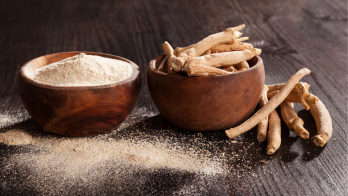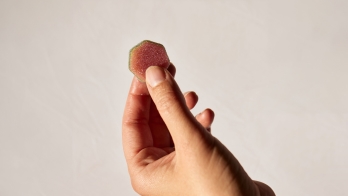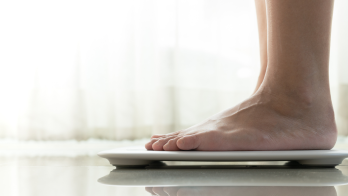Ari Tulla, Elo co-founder, and Anne Valta, Cycling Masters World Champion, tried Oura Ring. Here’s what happened.
Chronic sleep deprivation has negative consequences on overall health and tracking sleep can provide useful insights into sleep quality and duration. Elo co-founder, Ari Tulla, and Anne Valta, World Masters Cycling Champion, tracked their sleep habits with Oura Ring to see if it could boost sports performance. Read on to find out what happened.
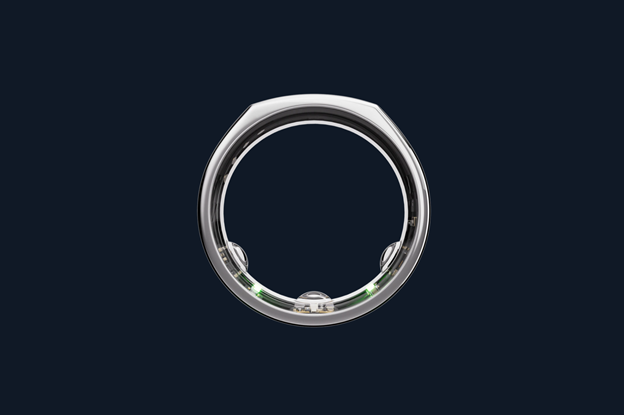
Contents
How does a lack of sleep impact health? How does Oura Ring work? What does the Oura Ring measure? Using Oura Ring to understand health patterns Why Ari and Anne wanted to try Oura Ring Pros and cons of Oura Ring Pros Cons Oura Ring Generation 2 vs. Oura Ring Generation 3 Summary Key TakeawaysIf you struggle to get a full night’s rest, you’re not alone. It’s estimated that one-third of Americans do not get enough sleep [ 2 3 1 4
Oura Ring is one of the most popular sleep trackers on the market and collects data about your body, activity, and sleep using optical heart-rate monitoring. It also monitors your resting heart rate (RHR), heart rate variability (HRV), body temperature, and respiratory rate to provide a deeper understanding of your sleep, recovery, and overall health.
Elo co-founder, Ari Tulla Anne Valta
Before learning about the pros and cons of Oura Ring, let’s briefly discuss what science has to say about sleep, health, and athletic performance.
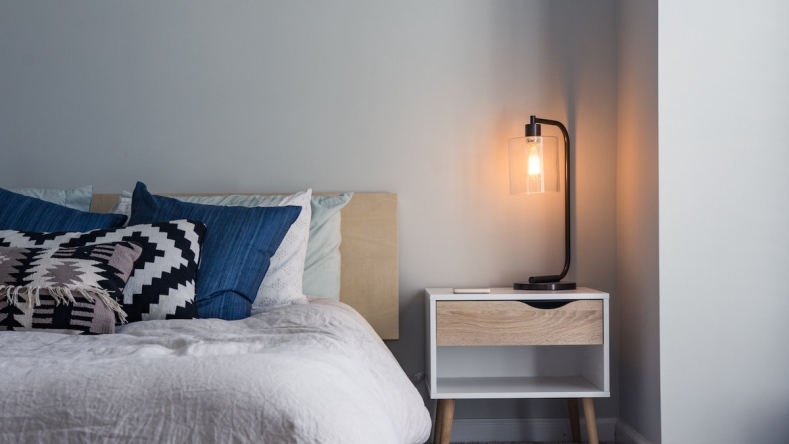
How does a lack of sleep impact health?
Chronic sleep deprivation puts you at risk for many health issues. Here are some of the ways that sleep deprivation impacts health and sports performance.
Decreased athletic performance.
While occasionally missing a few hours of shut eye may not immediately hinder your fitness goals, consistent poor sleep can negatively affect performance. Research shows that decreases in sleep duration and quality can hinder reaction time, accuracy, motivation, and endurance [ 5
If you struggle to fall (or stay) asleep, here are some
natural supplement options
that might help.
Weakened immunity.
Stress and sleep deprivation have been shown to significantly reduce your body’s ability to fight infection [ 7
Looking to boost your immune system? Here are
6 unique, science-backed ways
to enhance your immunity.
Increased risk of chronic disease.
Studies suggest that a lack of sleep is linked to an increased risk of heart disease, kidney disease, high blood pressure, diabetes, and stroke [ 6
Unwanted weight gain.
Not getting enough sleep can make weight loss more difficult and may promote weight gain by reducing physical activity, enhancing cravings, and slowing metabolism [ 9 correlation between sleep and the number on the scale
Memory issues.
How much sleep you get each night directly impacts your brain health. Consistent quality sleep appears to protect against brain diseases such as Alzheimer’s and other types of dementia. Conversely, a lack of sleep negatively affects your ability to focus, learn, and form memories [ 8
Nutrition also plays a role in cognitive health, so here are the
best (and worst) foods for your brain
.
How does Oura Ring work?
Oura Ring


Outside of a sleep lab, Oura Ring is the most accurate device on the market when it comes to tracking your sleep patterns, body temperature, and respiratory rate.
What does the Oura Ring measure?
At night, Oura Ring measures the following metrics:
RHR
HRV
Respiratory rate
Body temperature
Light, deep, and REM sleep
Nighttime movement
Sleep timing and quality
During the day, Oura Ring monitors the following metrics:
Activity levels
Calories
Steps
Inactive times
Naps
These data points are calculated and transferred to the Oura app so you can see your results in real time.

Using Oura Ring to understand health patterns
Oura Ring converts these measurements into three scores: sleep, activity and readiness.
Sleep
Oura Ring provides you with a sleep score that takes into account your total sleep time, sleep efficiency, the amount of time spent in REM, light, and deep sleep, and how long it takes you to fall asleep. Thus, the better your sleep quality is, the higher your score will be. These data points allow the Oura app to calculate your optimal bedtime and provide suggestions for how to optimize your sleep. Moreover, this information provides you with a holistic picture of your sleep patterns.
Getting enough sleep is essential for both performance and recovery, so if you struggle to fall (or stay) asleep, here are some natural supplement options
Activity
Oura Ring’s activity score is measured using your daily activity, step count, training frequency, and training volume, among other metrics. Therefore, the more physically active you are, the more your score increases. However, if you over-exercise your score will drop and Oura will recommend more recovery time.
Readiness
Readiness is the final measurement which combines elements of your sleep and activity scores, as well as your RHR, HRV, and body temperature. This is an overall measure of recovery that looks at your body’s responses to determine how prepared you are to tackle the current day’s stressors. As such, this score meant to best encapsulate your general health status.
Why Ari and Anne wanted to try Oura Ring
Ari and Anne are both avid cyclists, and wanted to learn more about their sleep patterns, and how sleep impacted their performance on and off the bike. Ari first found Oura Ring in 2015 through a kickstarter campaign
Pros and cons of Oura Ring
Ari and Anne have used Oura Ring for a combined ten years. Here are some pros and cons they experienced while using the ring.
Pros
Monitor recovery state.
Even though Ari uses both the Apple watch and Whoop, he relies on Oura Ring’s sleep and readiness scores to track his sleep and recovery, and adjust his training plan, as necessary. Similarly, Anne finds that her readiness score drops after a long bike ride or an all-out effort and tailors her training plan accordingly.
Predict illness.
Emerging evidence reveals that Oura Ring’s continuous temperature monitoring can spot pre-symptomatic signs of a fever based on deviations from your normal temperature patterns [ 10
Evaluate hormonal fluctuations.
For women, Oura Ring can be helpful for identifying physiological changes throughout the menstrual cycle and tailoring your training plan accordingly. Anne found that predicting the start of her period was easier with Oura Ring, and discovered that she could better adjust her training schedule based on “that time of the month”.
Cons
Have to wear it consistently.
Oura Ring works best when you wear it consistently because it measures deviations from your normal baseline over time. People who use their hands a lot and/or frequently lift weights may find it too bulky to wear all the time.
Unable to add previous day activities when not wearing the ring.
Oura has an automatic activity detection when you’re wearing the ring. if you’re not wearing it (e.g. when lifting weights), you have to add activity manually that day. Oura doesn’t have the ability to add activities manually the day after, often resulting in incomplete data.
Oura Ring Generation 2 vs. Oura Ring Generation 3
Over the last few years, Oura Ring has undergone a few upgrades, the most recent being generation 3 (launched in 2021). While generation 2 (launched in 2018) has many notable features, the newer model offers the same look and feel but provides more advanced technology, additional features, and an updated subscription model. Let’s take a look at how the Oura 3 is different from the previous generation.
Constant heart rate monitoring.
Unlike the Generation 2 model, Oura Ring 3 monitors your heart rate all day, rather than just at night. Additionally, Generation 3 offers post-workout insights in the Oura app including heart rate, distance and location details.
Improved sleep tracking.
The Oura 2 was already the best sleep tracker on the market, but the Oura 3 has improved sleep sensors that enable even more precise sleep tracking.
Blood oxygen tracking.
The Oura Ring 3 will release a new blood oxygen sensor feature (similar to the latest Apple Watch) later in 2022 that measures your blood oxygen levels while you sleep.
Period prediction.
Oura 3 has 5 additional temperature sensors which enable more accurate temperature tracking and period prediction.
Updated membership features.
The new Oura membership comes with a library of voice-guided exercises for meditation, sleep, and breathwork.
More features for the same battery life.
Even though the 3rd generation Oura Ring added real-time heart rate tracking and more sensors, the battery life remains the same at 4-7 days.
Summary
Chronic sleep deprivation has drastic consequences for overall health and sports performance, and impacts your immune system, recovery time, memory, and motivation. Tracking your sleep habits with a device (such as Oura Ring) provides a deeper understanding about your sleep quality, as well as activity and readiness to train. Offering data points such as RHR, HRV, body temperature, activity levels, and insights into sleep stages, Oura Ring is useful for those who are interested in understanding how sleep as well as their lifestyle choices impact their health, well being and sports performance.
Key Takeaways
Experts recommend 7 hours of sleep per night, yet one-third of Americans do not consistently get enough sleep [
2
,3
].Oura is an innovative sleep tracker that uses both nighttime body measurements as well as daytime activity tracking to guide people to make long-term chances for better health.
Outside of a sleep lab, Oura Ring is the most accurate device on the market when it comes to tracking your sleep patterns, body temperature, and respiratory rate.
Oura Ring works best when you wear it consistently because it measures deviations from your normal baseline over time.
Oura Ring can be a helpful tool for spotting changes in your entire body during your menstrual cycle through tracking your RHR, HRV, respiratory rate, sleep, and body temperature.
While the Oura generation 2 has many notable features, the newer model offers the same look and feel while providing advanced insights, additional features, and an updated subscription model.
References
Watson NF, Badr MS, Belenky G, et al. Recommended amount of sleep for a healthy adult: a joint consensus statement of the American Academy of Sleep Medicine and Sleep Research Society. Sleep. 2015;38(6):843–844.
Barnes, C. M., & Drake, C. L. (2015). Prioritizing Sleep Health: Public Health Policy Recommendations. Perspectives on psychological science: a journal of the Association for Psychological Science, 10(6), 733–737.
https://doi.org/10.1177/1745691615598509
Why is sleep so important to weight loss? Sleep Foundation. (2020, October 9). Retrieved December 22, 2021, from https://www.sleepfoundation.org/physical-health/weight-loss-and-sleep.
Centers for Disease Control and Prevention. (2018, August 8). CDC - sleep and chronic disease - sleep and sleep disorders. Centers for Disease Control and Prevention. Retrieved December 22, 2021, from
https://www.cdc.gov/sleep/about_sleep/chronic_disease.html
.Watson, A. M. (2017). Sleep and athletic performance. Current Sports Medicine Reports, 16(6), 413–418.
https://doi.org/10.1249/jsr.0000000000000418
U.S. Department of Health and Human Services. (n.d.). Sleep deprivation and deficiency. National Heart Lung and Blood Institute. Retrieved December 27, 2021, from
https://www.nhlbi.nih.gov/health-topics/sleep-deprivation-and-deficiency
American Psychological Association. (n.d.). Stress weakens the immune system. American Psychological Association. Retrieved December 27, 2021, from
https://www.apa.org/research/action/immune
Memory & Sleep: How deprivation affects the brain. Sleep Foundation. (2020, November 13). Retrieved December 27, 2021, from
https://www.sleepfoundation.org/how-sleep-works/memory-and-sleep
Kline, C. E., Chasens, E. R., Bizhanova, Z., Sereika, S. M., Buysse, D. J., Imes, C. C., Kariuki, J. K., Mendez, D. D., Cajita, M. I., Rathbun, S. L., & Burke, L. E. (2021). The association between sleep health and weight change during a 12-month behavioral weight loss intervention. International journal of obesity (2005), 45(3), 639–649.
https://doi.org/10.1038/s41366-020-00728-8
Smarr, B. L., Aschbacher, K., Fisher, S. M., Chowdhary, A., Dilchert, S., Puldon, K., Rao, A., Hecht, F. M., & Mason, A. E. (2020). Feasibility of continuous fever monitoring using wearable devices. Scientific Reports, 10(1).
https://doi.org/10.1038/s41598-020-78355-6

